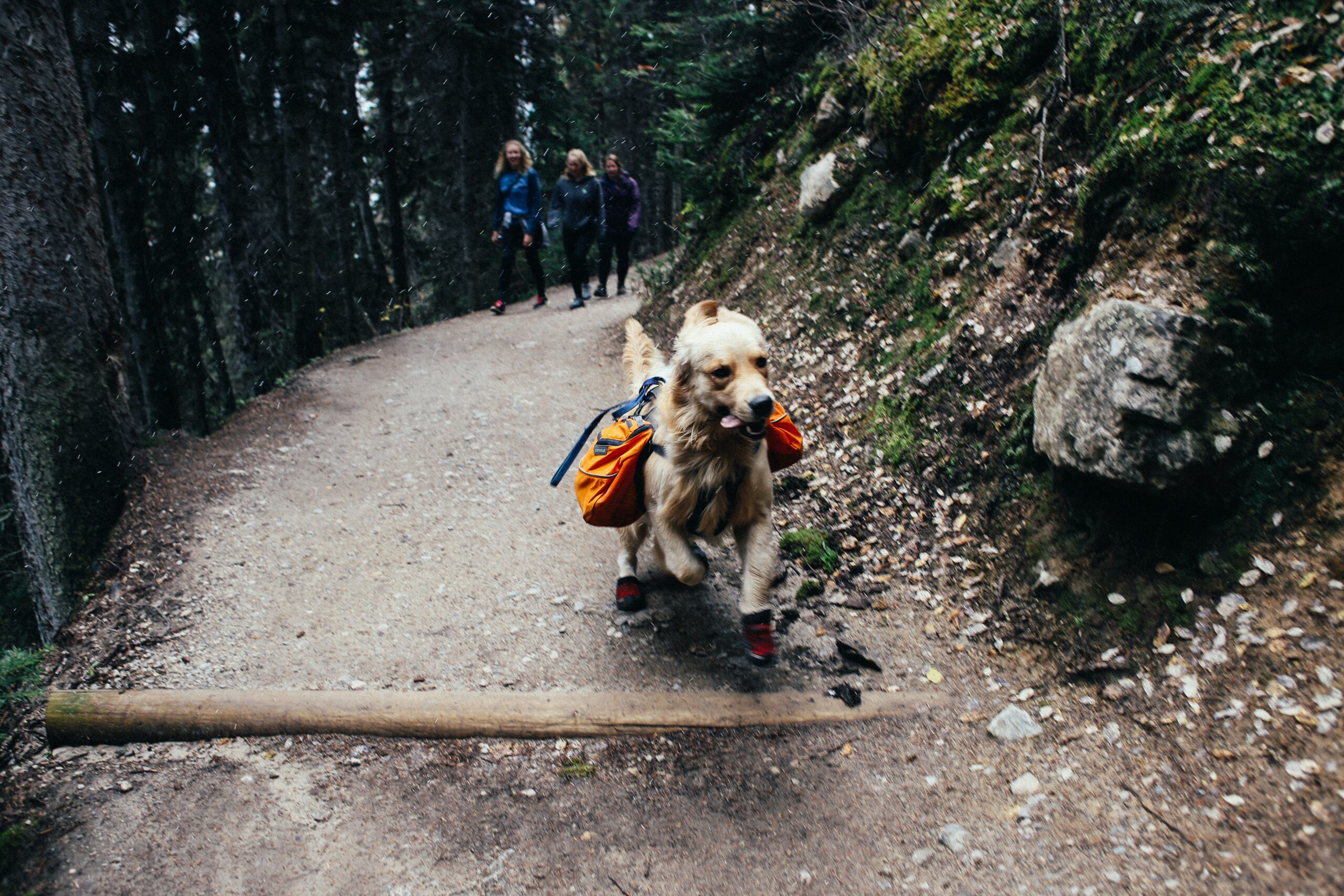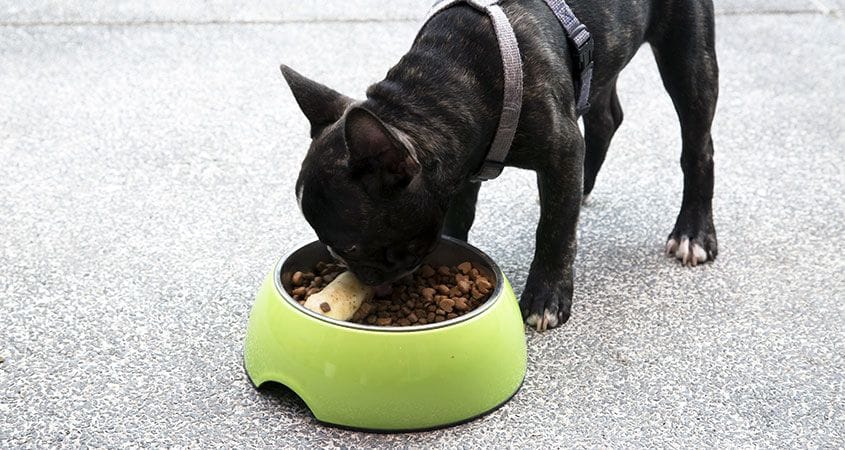Start by doing some research. Dogs are not allowed in many national parks. However, they are welcome at picnic areas. In addition, some state parks will restrict the number of trails in which dogs are permitted. You’ll want to know how long hiking with your dog will be, so you can plan your activities accordingly. Do your homework in advance to ensure you and your dog are on the most excellent trail possible.

Adhere to dog-leash regulations while hiking with your dog:
While many regions have designated off-leash zones, your dog should always be under your control via voice command when in one of these areas. Many dog-friendly trails demand that your pet should be kept on a leash at all times while on the route.
They teach tricks and behaviors like sit, stay and lay, but they also deal with leash training, troublesome behaviors, and toilet training, among other things. On some paths, dogs must be on a leash no more than 6 feet in length. Have the appropriate leash and all the necessary supplies on hand while hiking with your dog so that everyone can enjoy themselves. Before hiking with your dog ,you should teach him to walk politely on a leash so that you are not the one being dragged around.
Verify that your dog has identification tags on:
Microchipping your dog, in addition to tags, is always a good idea for hiking with your dog . It will assist animal shelters, veterinarians, and rescues in returning your dog to you securely . If you and your dog get up separated, wearing identification tags on your dog will come in handy. If another hiker locates you, it may make it easier for you to be reunited.
Keep your dog’s waste contained:
To leave no trace, you must pick up after your dog every day. The adage “what goes in must come out” is probably familiar to you. While hiking with your dog, many trails do not have doggy poop stations, so be prepared and bring several bags with you. In case you can’t stand the scent of your dog’s waste for an extended period. Allow your dog to relieve himself at the trailhead so that you may conveniently dispose of his waste.
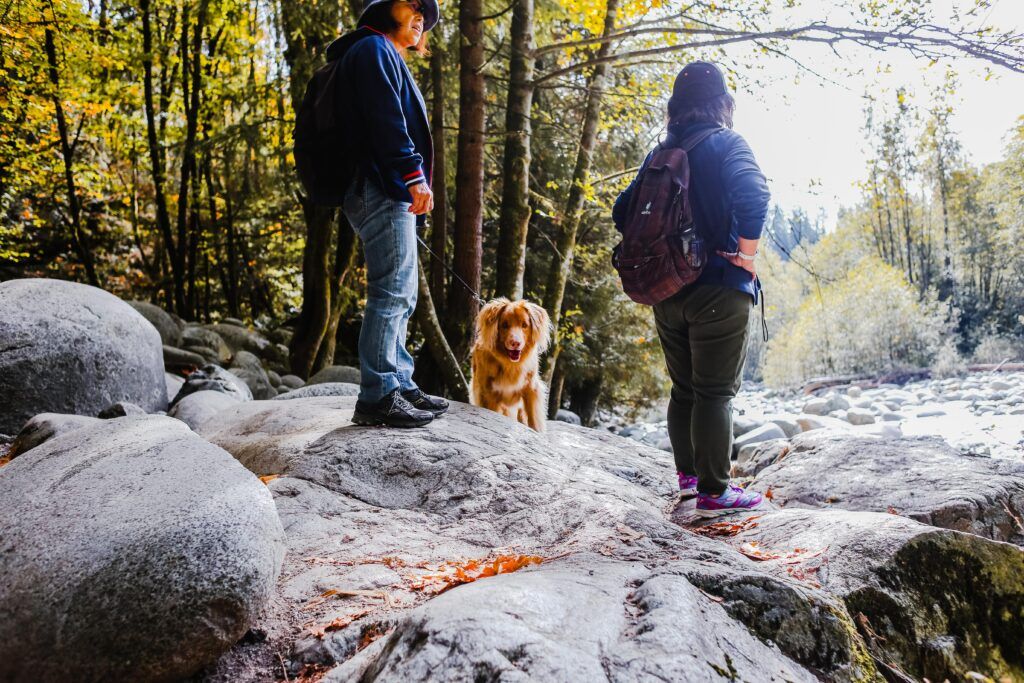
Once you’re on the trail, you can double bag their waste. Bury your dog’s waste 6 to 8 inches underground and at least 200 feet away from water and campers if you plan on doing so. Water is a must-have. This is perhaps the most critical piece of dog trekking advice you’ll ever read.
To avoid giving your dog polluted water, make sure you have access to clean water sources. Water dishes that you may collapse should be brought. Keeping food and water in these will be a lot easier because they make storage easier. Because dogs can’t sweat like humans, they are more prone to heatstroke.
Bring snacks/foods with you:
It would help if you fed your dog at least an hour before you left the house. Make sure that they don’t get sick while hiking with your dog. They should take medicine 30 minutes before setting out and another 30 minutes after they return. Consider bringing snacks and a lunch with you, depending on how long you plan to hike.
Bring your dog’s favorite toy with you. My dog enjoys hiking even more when he has a ball with him. The giant sticks he can get his paws on are also favorites. Smaller options, such as a ball or little toy they can fetch, are therefore preferred. While generally considerate of others, he can be a bit of a jerk and run straight into our backsides.
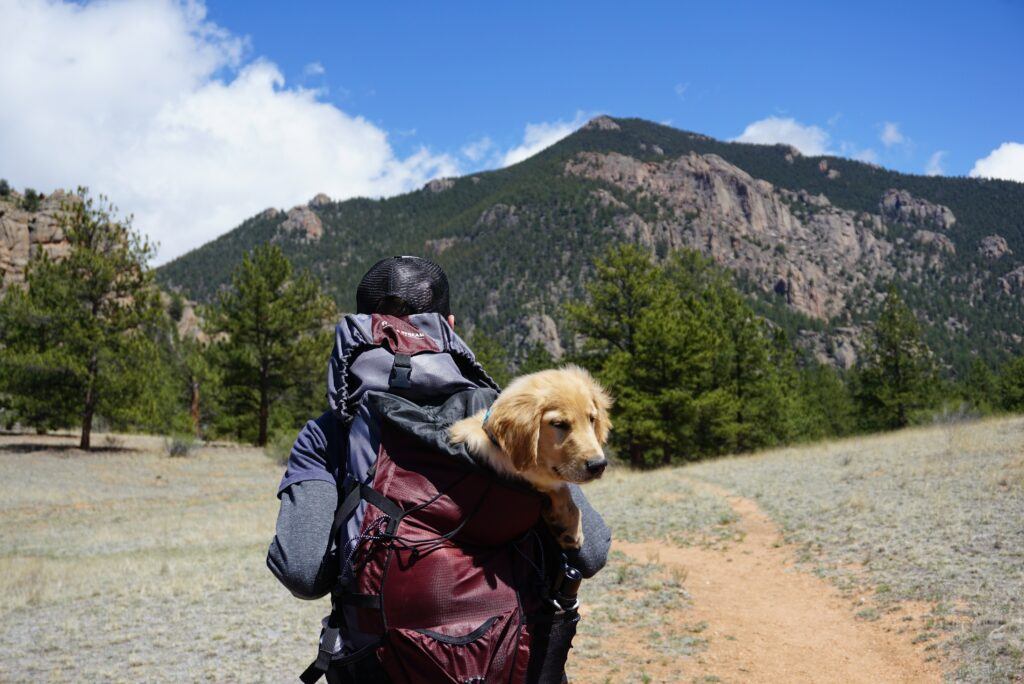
If you’re hiking with your dog don’t play with him too much. Be considerate of your fellow hikers. While waiting, you can hold your puppy if it’s little enough. In terms of hiking with dog etiquette, you should give way to other hikers, bikers, and horses when possible. Walk to the side of the trail and put your dog on a heel as soon as someone approaches.
Bring your dog’s pack along with you, too. Depending on the breed, a healthy dog can carry up to 25% of its body weight. If you’d like your dog to help with the heavy lifting, train them properly. You may buy a dog pack that includes food, biscuits, a first aid kit, and a water bowl for your pet.
Check your dog’s fitness level before embarking on the hiking with your dog :
It’s also a good idea to hold off on taking your puppy on an adventure until after they’ve had all of their vaccines. Make sure you don’t push a young or old acquaintance too far. If your dog is panting or foaming at the mouth, put an end to it immediately. Allow them to relax, and if necessary, call it a day and return to the trailhead. Should follow a general rule when it comes to hiking with your dog .
You should walk your dog for 5 minutes twice a day, starting at the age of 1 month. There’s no good reason to take a 3-month-old puppy out for an extended walk beyond 15-20 minutes. This is for their good, as well as the good of their growth plates. Consult your dog’s veterinarian for more precise advice.
Bring appropriate footwear with you while hiking with your dog :
If it’s cold and rainy, you might want to consider carrying a rain jacket. Walking on hot sand or cement, across rocks, or even a simple rock salt is an option for. While hiking with your dog Protect your dog with delicate pads that can be made simple by using dog booties. Bring an insect repellant for your pet. Dogs, like humans, are susceptible to mosquito bites, which can make them itchy and uncomfortable.
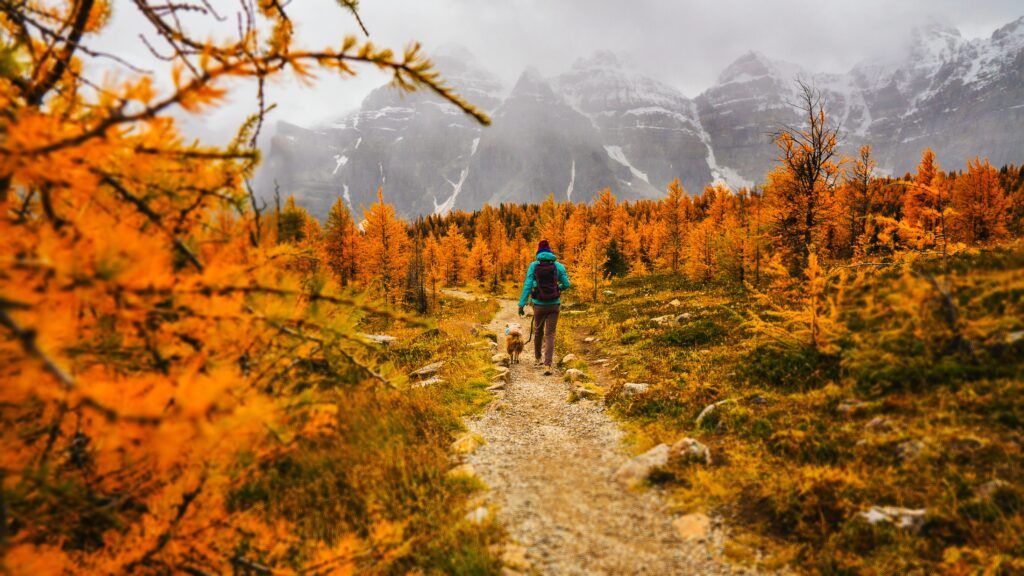
Furthermore, the diseases they may contract as a result of those bites should be considered a concern. Insect repellant is a need, especially if you live in a region where ticks are common. Tick and bug collars are available that can endure for months at a time. Consult your veterinarian to determine the proper collar and repellent for your dog in your area.
Large-sized sunblock:
You should bring sunscreen if you want to go hiking with your dog for an extended period. Dogs, like people, can get sunburned, but because they are covered in fur, I rarely give it a second thought. In this scenario, it’s better to be cautious than sorry. Because of the elevation, our furry pals are more vulnerable to the sun’s dangerous ultraviolet radiation.

